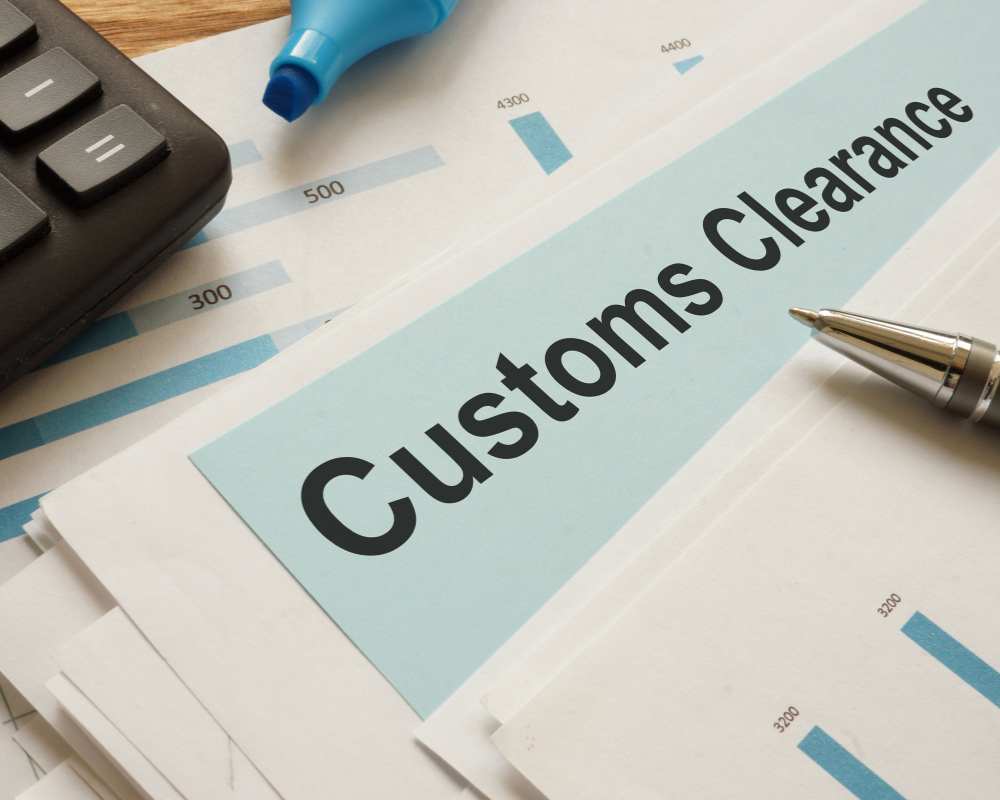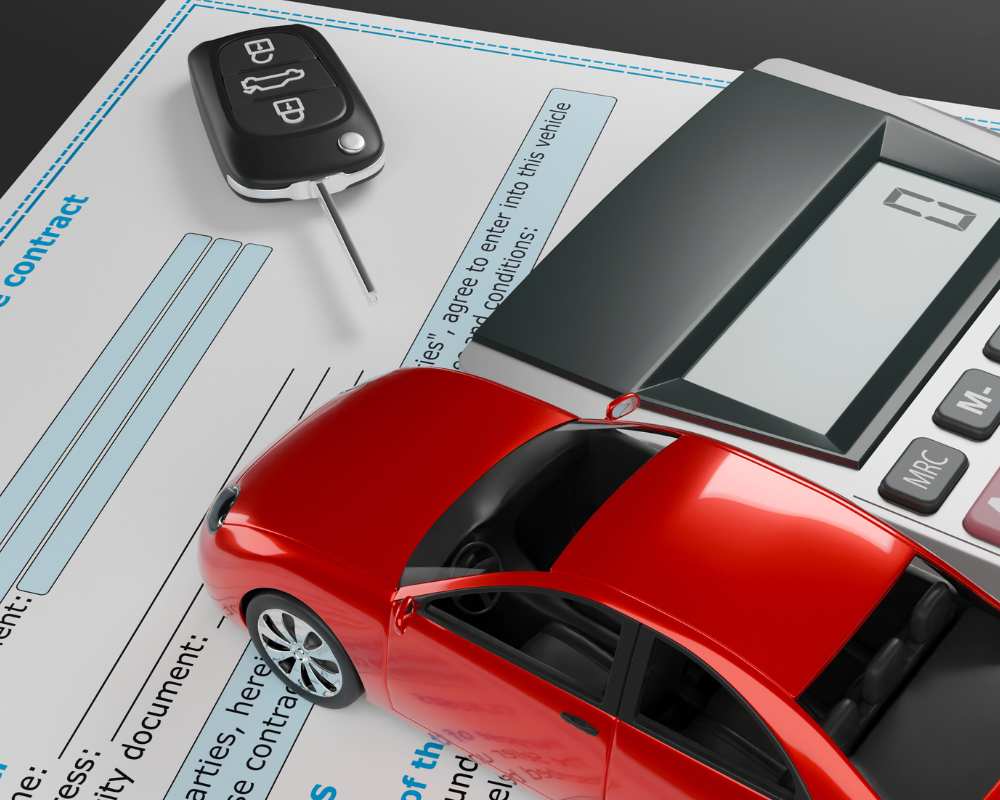Introduction
Japan’s automotive market offers some of the world’s most sought-after vehicles, from pristine JDM classics to cutting-edge hybrid technology. However, navigating Japanese vehicle export regulations can feel overwhelming for first-time exporters. The complexity of international car import laws, combined with Japan’s strict export compliance requirements, creates a regulatory maze that demands careful attention to detail.
This comprehensive guide breaks down the entire process of exporting vehicles from Japan, covering everything from initial export permits to final customs clearance in your destination country. Whether you’re a collector seeking a rare Skyline GT-R, a dealer expanding your inventory, or an individual looking to import your dream car, understanding these regulations is crucial for a successful transaction.
By the end of this guide, you’ll have a clear roadmap for legally and efficiently shipping vehicles from Japan while avoiding costly mistakes that could delay your import or result in compliance issues.
Understanding Japanese Export Regulations
Export Permit Requirements
Japan’s vehicle export process begins with obtaining proper export permits from Japanese authorities. The Export Trade Control Order requires exporters to secure an export license for vehicles, which involves submitting detailed documentation to the Ministry of Economy, Trade and Industry (METI). This process typically takes 2-3 weeks and requires proof of vehicle ownership, destination country details, and compliance with Japanese customs regulations.
The export permit application must include the vehicle’s chassis number, engine specifications, and intended use in the destination country. Japanese authorities scrutinize these applications to ensure compliance with both domestic export controls and international trade agreements.
Vehicle Eligibility Criteria
Not all vehicles qualify for export from Japan. Cars must meet specific age requirements, typically being at least 25 years old for certain markets like the United States. Additionally, vehicles must pass Japanese inspection standards and cannot have any outstanding liens or legal issues.
Modern vehicles face additional scrutiny regarding emissions standards and safety compliance. Japanese authorities verify that exported vehicles meet the technical requirements of their destination countries, which can involve additional testing and certification processes.
Required Documentation from Japanese Authorities
Exporting cars from Japan requires several critical documents from Japanese government agencies. The Export Certificate (Yushutsukyo) serves as the primary authorization document, while the Deregistration Certificate (Shaken) proves the vehicle’s legal status in Japan has been properly terminated.
Additional documentation includes the original Japanese title (Shaken-sho), customs declaration forms, and proof of payment for all applicable taxes and fees. These documents must be properly translated and authenticated, as they form the foundation of your import application in the destination country.
Japanese customs also requires detailed packing lists, commercial invoices, and shipping documentation that accurately reflects the vehicle’s value and specifications. Any discrepancies in these documents can result in significant delays or rejection of the export application.
Import Requirements by Major Destination Countries
United States: The 25-Year Rule and Federal Compliance
The United States enforces strict regulations for importing Japanese vehicles, centered around the famous 25-year rule. Vehicles must be at least 25 years old to bypass EPA and DOT safety standards, making cars manufactured before 1999 currently eligible for import.
For newer vehicles, importers must demonstrate compliance with Federal Motor Vehicle Safety Standards (FMVSS) and Environmental Protection Agency (EPA) emissions requirements. This process involves extensive testing, modifications, and certification that can cost tens of thousands of dollars.
The National Highway Traffic Safety Administration (NHTSA) maintains a list of approved vehicles and registered importers who can handle the compliance process. Working with these authorized importers is essential for successfully importing newer Japanese vehicles into the US market.
Canada: 15-Year Rule and Transport Canada Requirements
Canada offers more flexibility with its 15-year import rule, allowing vehicles manufactured in 2009 or earlier to enter with reduced regulatory burden. Transport Canada requires proof of compliance with Canadian Motor Vehicle Safety Standards (CMVSS) for newer vehicles.
The Registrar of Imported Vehicles (RIV) program manages the import process, requiring pre-approval for many vehicle types. Importers must provide detailed technical specifications and may need to perform modifications to meet Canadian standards for lighting, speedometers, and safety equipment.
Canadian customs also imposes duties and taxes based on the vehicle’s value, typically ranging from 6.1% to 10% depending on the country of origin and vehicle type. These costs must be factored into the total import budget.
Australia and New Zealand: Compliance and Quarantine Requirements
Australia’s vehicle import regulations focus heavily on compliance with Australian Design Rules (ADR) and biosecurity requirements. The Department of Infrastructure requires vehicles to undergo extensive quarantine and cleaning procedures to prevent the introduction of foreign pests and diseases.
New Zealand follows similar protocols with its Land Transport Rule requirements and Ministry for Primary Industries biosecurity standards. Both countries require vehicles to be steam-cleaned and inspected before clearance, adding time and cost to the import process.
The Specialist and Enthusiast Vehicle Scheme (SEVS) in Australia provides pathways for importing certain Japanese vehicles that meet specific criteria, though slots are limited and competition is fierce.
European Union: Type Approval and Emissions Standards
The European Union’s vehicle import regulations center around whole vehicle type approval and compliance with Euro emissions standards. Japanese vehicles must demonstrate conformity with EU technical requirements, which often necessitates modifications to lighting, emissions systems, and safety equipment.
Individual EU member states may impose additional requirements, such as roadworthiness tests and national registration procedures. The complexity of EU regulations often makes professional assistance essential for successful imports.
Brexit has created additional complications for UK imports, requiring separate compliance procedures and documentation for vehicles entering Britain versus mainland Europe.
Shipping Methods Comparison
RoRo (Roll-on/Roll-off) Shipping: Cost-Effective Volume Solution
RoRo shipping represents the most economical option for vehicle shipping from Japan, particularly for standard passenger cars. Vehicles are driven directly onto specialized car carrier ships, reducing handling costs and loading time. This method typically costs 30-50% less than container shipping for single vehicle exports.
However, RoRo shipping offers limited security and weather protection during transit. Vehicles remain exposed to salt air and potential minor damage from loading operations. Transit times are generally longer due to multiple port stops, often taking 6-8 weeks to reach North American destinations.
RoRo services operate on fixed schedules from major Japanese ports like Yokohama, Nagoya, and Kobe, with regular departures to popular destinations worldwide. This predictability helps with planning but offers less flexibility for urgent shipments.
Container Shipping: Premium Protection and Security
Container shipping provides superior protection for high-value or rare vehicles, enclosing them in weather-tight containers throughout the journey. This method allows for additional items to be shipped alongside the vehicle, making it cost-effective for multiple-item shipments.
The enhanced security of container shipping makes it the preferred choice for classic cars, modified vehicles, or any automobile where condition preservation is paramount. Containers can be sealed and inspected only at origin and destination, reducing theft risk and unauthorized access.
Container costs are typically 40-60% higher than RoRo shipping, but transit times are often faster due to direct routing and priority handling. The ability to consolidate multiple vehicles or include spare parts and accessories can offset some of the additional expense.
Timeline and Cost Considerations
Shipping duration varies significantly based on method and destination. RoRo services to the US West Coast typically take 3-4 weeks, while East Coast destinations require 5-6 weeks. Container shipping can reduce these timelines by 7-10 days due to more direct routing.
Cost calculations must include port fees, documentation charges, and destination handling fees beyond the basic freight charges. These additional costs can add $500-1,500 to the total shipping expense, varying by port and service level.
Essential Documentation and Insurance
Export Certificates and Official Documentation
The foundation of any successful vehicle export lies in obtaining proper export certificates from Japanese authorities. The primary document, known as the Yushutsukyo, must be secured before any vehicle can leave Japan. This certificate verifies that the vehicle has been legally purchased, all taxes paid, and export restrictions satisfied.
Supporting documentation includes the original Japanese registration papers, proof of deregistration from Japanese road systems, and customs declaration forms. These documents must be meticulously prepared, as errors can result in shipment delays or rejection at destination ports.
Bill of Lading and Shipping Documentation
The Bill of Lading serves as both a receipt for shipped goods and a legal document establishing ownership during transit. This document must accurately reflect the vehicle’s specifications, value, and destination details. Any discrepancies between the Bill of Lading and other documentation can trigger customs investigations and delays.
Shipping companies provide additional documentation including packing lists, loading confirmations, and transit insurance certificates. These documents must be carefully reviewed and securely stored, as they’re required for customs clearance and insurance claims if needed.
Insurance Requirements and Options
Marine insurance is essential for protecting your investment during ocean transit. Basic coverage typically includes total loss protection, but comprehensive policies can cover partial damage, theft, and even delays. Insurance costs generally range from 0.5% to 2% of the vehicle’s declared value.
Consider additional coverage for port handling, as vehicles can be damaged during loading and unloading operations. Some insurers offer specialized classic car coverage that accounts for the unique risks associated with vintage vehicle transport.
Customs Clearance Process
Step-by-Step Clearance Procedures
Customs clearance begins before your vehicle arrives at the destination port. Pre-clearance documentation must be submitted to customs authorities, including import permits, duty payment arrangements, and compliance certifications. This advance preparation can significantly reduce port delays and storage costs.
Upon arrival, customs officials inspect the vehicle and verify documentation. This process involves physical examination of the vehicle, confirmation of specifications against documentation, and assessment of applicable duties and taxes. The inspection can take anywhere from a few hours to several days, depending on the complexity of the import and workload at the port.

Common Delays and Prevention Strategies
Documentation errors represent the most common cause of customs delays. Incomplete forms, incorrect vehicle specifications, or missing certificates can halt the clearance process for weeks. Working with experienced customs brokers who understand Japanese vehicle exports can prevent these issues.
Undervaluation of vehicles often triggers additional scrutiny and delays. Customs authorities use sophisticated databases to verify vehicle values, and significant discrepancies result in detailed investigations and potential penalties. Accurate valuation based on current market conditions is essential for smooth clearance.
Working with Customs Brokers
Professional customs brokers provide invaluable expertise in navigating complex import regulations. These specialists understand the nuances of international car import laws and can expedite the clearance process through proper documentation and relationship management with customs officials.
Broker fees typically range from $300 to $800 per vehicle, but their expertise often saves far more in prevented delays and avoided penalties. Choose brokers with specific experience in Japanese vehicle imports and strong relationships with relevant government agencies.
Common Challenges and Solutions
Documentation Errors and Corrections
Paperwork mistakes plague many vehicle export transactions, often stemming from language barriers and complex regulatory requirements. Common errors include incorrect chassis numbers, mismatched specifications, and incomplete customs declarations. These mistakes can delay shipments by weeks and incur substantial storage fees.
Prevention strategies include working with bilingual documentation specialists, implementing multi-step verification processes, and maintaining detailed checklists for all required documents. Consider hiring professional translation services for critical documents to ensure accuracy and compliance.
Shipping Delays and Contingency Planning
Weather conditions, port congestion, and mechanical issues can disrupt shipping schedules. Typhoon season in Japan (June through October) poses particular risks for shipping delays, while labor disputes at destination ports can extend transit times significantly.
Develop contingency plans that include alternative shipping dates, backup port options, and communication protocols with all parties involved. Factor potential delays into your timeline and budget to avoid costly rushed solutions.
Compliance Issues and Risk Mitigation
Changing regulations in both Japan and destination countries create ongoing compliance challenges. What was legal yesterday may not be acceptable today, particularly regarding emissions standards and safety requirements. Staying informed about regulatory changes is crucial for successful exports.
Establish relationships with regulatory experts who monitor changes in international car import laws. Subscribe to industry publications and government updates to stay ahead of regulatory shifts that could impact your export plans.
Timeline Expectations
From Purchase to Export Permit
The journey from vehicle purchase to export permit typically takes 3-4 weeks in Japan. This timeline includes title transfer processing, export permit application, and customs documentation preparation. Factors that can extend this timeline include holiday periods, complex vehicle histories, and additional inspection requirements.
Rush services are available for urgent exports, but they come with premium costs and limited availability. Planning ahead and allowing adequate time for proper documentation processing ensures smoother transactions and reduced stress.
Shipping Duration by Method and Destination
RoRo shipping to major destinations typically requires 3-6 weeks, depending on the route and number of port stops. US West Coast destinations are closest at 3-4 weeks, while East Coast ports require 5-6 weeks. European destinations generally take 4-5 weeks, and Australian routes need 3-4 weeks.
Container shipping can reduce these timelines by 7-10 days due to more direct routing and priority handling. However, container availability can impact scheduling, particularly during peak shipping seasons.
Customs Clearance Timeframes
Customs clearance duration varies significantly based on destination country regulations and port efficiency. Well-prepared documentation can result in same-day clearance, while complex cases may require several weeks for resolution.
US customs typically processes routine imports within 2-3 days, while Canadian clearance often takes 3-5 days. European Union clearance can extend to 1-2 weeks due to additional compliance verifications, and Australian biosecurity requirements may add an additional week for quarantine procedures.
How AKIYAMA LLC Simplifies the Process
Expertise in Japanese Regulations
AKIYAMA LLC brings decades of experience in Japanese vehicle export regulations, providing clients with insider knowledge that prevents costly mistakes and delays. Our team maintains current relationships with Japanese government agencies, ensuring efficient processing of export permits and customs documentation.
Our expertise extends beyond basic regulatory compliance to include strategic advice on timing, documentation optimization, and risk mitigation. We understand the nuances of different vehicle types and destination requirements, allowing us to customize our services for each client’s specific needs.

End-to-End Service Offerings
From initial vehicle sourcing to final delivery, AKIYAMA LLC provides comprehensive export services that eliminate the complexity of international vehicle shipping. Our services include vehicle inspection and verification, export permit procurement, shipping arrangement, customs clearance support, and destination delivery coordination.
We handle all aspects of documentation preparation, working with certified translators and regulatory specialists to ensure accuracy and compliance. Our established relationships with shipping companies and customs brokers provide clients with competitive pricing and priority service.
Success Stories and Client Testimonials
AKIYAMA LLC has successfully exported thousands of vehicles from Japan, building a reputation for reliability and expertise among collectors, dealers, and individual enthusiasts worldwide. Our clients consistently report time savings of 4-6 weeks compared to self-managed exports, along with significant cost savings through our negotiated shipping rates and efficient documentation processes.
Recent client feedback highlights our ability to navigate complex regulatory challenges, including rare vehicle classifications and changing import requirements. Our proactive communication and problem-solving approach ensure clients remain informed throughout the export process.
Cost and Time Savings
Working with AKIYAMA LLC typically saves clients 30-40% on total export costs through our volume discounts with shipping companies, streamlined documentation processes, and prevention of costly delays. Our efficient procedures reduce total transaction time from 8-12 weeks to 6-8 weeks for most exports.
The value of our expertise becomes most apparent when complications arise. Our ability to quickly resolve documentation issues, navigate regulatory changes, and coordinate with multiple parties prevents the exponential cost increases that often accompany export problems.
Conclusion
Successfully navigating Japanese vehicle export regulations requires careful attention to detail, thorough understanding of international compliance requirements, and strategic planning for potential challenges. The complexity of these regulations continues to evolve, making professional expertise increasingly valuable for successful exports.
Whether you’re importing a single vehicle or managing multiple exports, understanding the complete process from Japanese export permits to destination country clearance is essential for success. The investment in proper documentation, appropriate shipping methods, and professional guidance pays dividends in reduced delays, lower costs, and peace of mind.
Ready to start your Japanese vehicle export journey? Contact AKIYAMA LLC today for a comprehensive consultation on your specific export needs. Our team of experts will guide you through every step of the process, ensuring compliance, efficiency, and successful delivery of your dream vehicle.
Frequently Asked Questions
Q: How long does the complete export process take from Japan? A: The typical timeline ranges from 6-10 weeks, including 3-4 weeks for documentation and permits in Japan, 3-6 weeks for shipping, and 1-2 weeks for customs clearance at destination.
Q: What’s the difference in cost between RoRo and container shipping? A: RoRo shipping typically costs 30-50% less than container shipping, but container shipping offers superior protection and security for high-value vehicles.
Q: Do I need to pay duties and taxes when importing from Japan? A: Yes, most countries impose import duties ranging from 2.5% to 10% of the vehicle’s value, plus applicable sales taxes and processing fees.
Q: Can I import a vehicle that’s less than 25 years old to the United States? A: Vehicles under 25 years old must comply with EPA and DOT standards, requiring extensive testing and modifications that can cost $20,000-50,000 or more.
Q: What happens if my vehicle is damaged during shipping? A: Marine insurance covers transit damage, but you must document any damage immediately upon delivery and file claims promptly with detailed photographic evidence.







